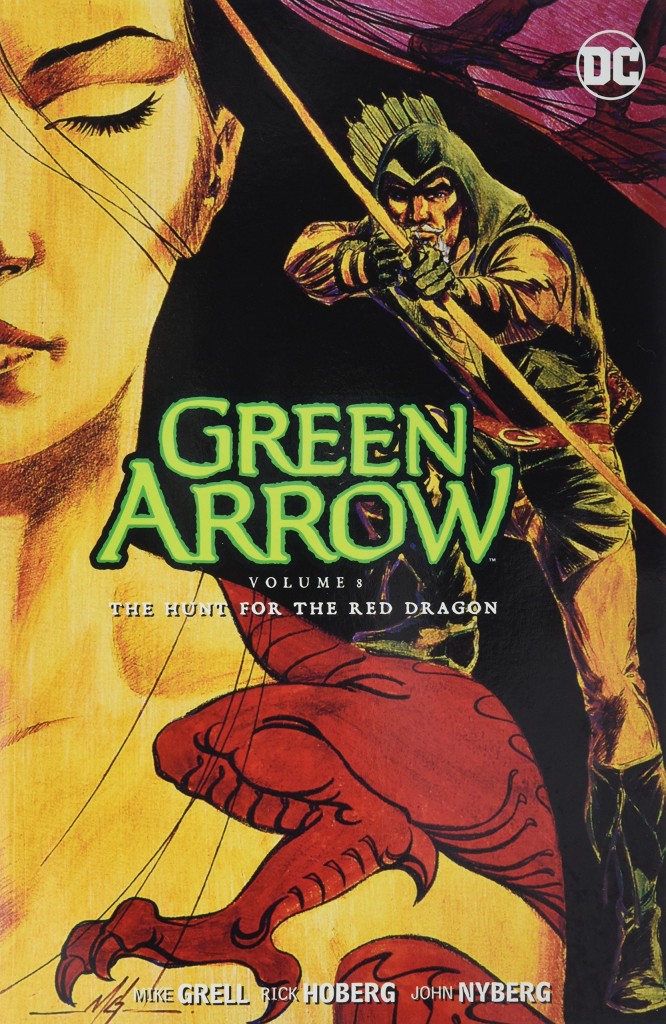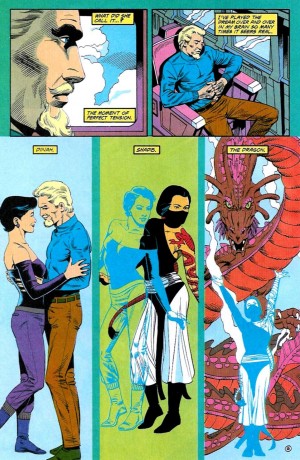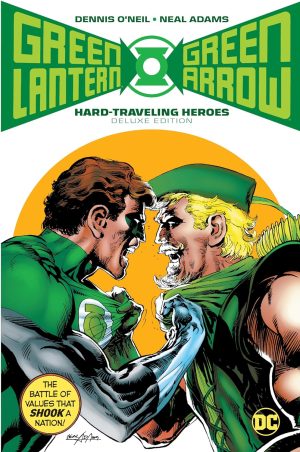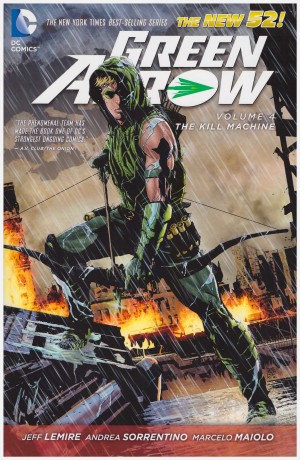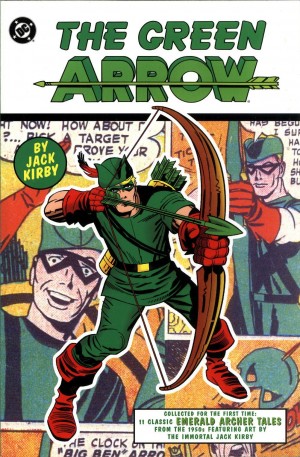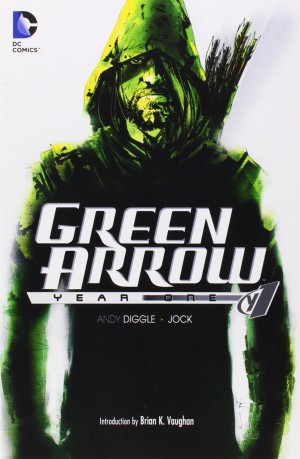Review by Ian Keogh
Shado’s complex character was introduced by Mike Grell in his first Green Arrow story, The Longbow Hunters. Japanese by birth, the convoluted system of honour and obligation saw her innate archery skills employed in the service of Yakuza gangsters until she emphatically severed her ties. She’s crossed paths with Green Arrow on several occasions since, once employing him as the unwitting father of a child. She’s essentially unknowable, an ally at times, yet should her immediate needs require it, it’s been emphasised that she’d have few compunctions about killing Green Arrow.
For the title story he’s required to track her down. Grell doesn’t play the audience for mugs, and concedes early there’s more to the request than Green Arrow’s told, something he himself suspects, but there’s also more to the story than readers are told. The presence of Shado seems to release the best of Grell. Some narrative captions are a little over the top, but they’re the only small negative points about the writing, in which the emotional depth absent from Homecoming returns amid numerous nice small touches. One is the arch comment about wasting a good arrow when Green Arrow performs the circus trick of splitting an arrow already lodged in the target bullseye. ‘The Hunt for the Red Dragon’ skilfully switches focus with every chapter, building tension, releasing it, then starting the process again in what’s a clever and compulsive tale with a brilliantly impossible quest forming the final chapter. Artist Rick Hoberg’s still limited by stiff and occasionally stunted figures, but he rises to the occasion with his layouts. There’s a relatively frequent use of montage, sometimes experimental effects, and clarity when it comes to telling the story. He illustrates most of the collection’s remaining pages in the same fashion.
Two episode stories occupy those remaining pages. The stories that inspired Grell to create comics teamed Green Arrow and Green Lantern in moralising tales of social responsibility, and that’s a theme Grell continued in his Green Arrow run. At times he’s hardly subtle, and hammers home a point about the homeless having worth as human beings. This has to be considered against a background in 1992 when few creators other than Grell displayed conscience enough to raise such issues in comics at all. If they did, it was in passing, and Grell’s commitment to the characters he introduces extends beyond this story, nicely illustrated by Frank Springer, who seems to enjoy the material.
Indelibly marking the era is Grell jokingly creating a legendary Seattle rock band as none had existed, and that’s followed by a skilful piece of narrative misdirection in the closing selection, as what appears to be a commonplace drug dealer story becomes something else entirely. It’s somewhat tarnished by the introduction of a ludicrously glamorous woman inappropriately dressed for her task, but is an interesting use of fantasy in the otherwise realistic world of Green Arrow.
Old Tricks, the final collection of Grell’s 1990s work on Green Arrow, is due for release early in 2018.
